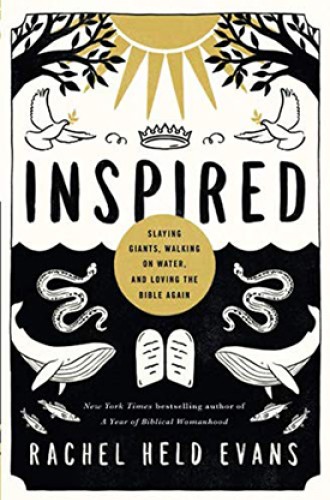How Rachel Held Evans bears the beauty and the burden of reading the Bible
The creative retellings in Inspired model an account of inspiration that is as much a spiritual practice as a religious doctrine.
Six years ago, Rachel Held Evans published a best-selling memoir about her attempts to take the Bible’s teachings on women literally. A Year of Biblical Womanhood offered a comic reflection on what it means for modern women to engage critically with the Bible’s admonitions that women cover their heads in prayer, separate themselves from their households during menstruation, and call their husbands “master.”
A few books later, Evans returns to the subject matter of her first book—not to camping in a red tent per se, but to the underlying questions about inspiration and authority that animated her year-long experiment with biblical literalism. While the former book took up interpretive questions about the Bible’s legal and epistolary teachings, Inspired emphasizes the Bible’s narrative tradition by examining biblical stories, our own stories, and how the two meet and part over the course of a lifetime. Like Macy Halford’s memoir about her lifelong relationship with Oswald Chambers’s My Utmost for His Highest, Inspired tells the story of a life lived with a book. As Evans’s story moves through stages of enchantment and estrangement, she charts her path back to the Bible, leaving breadcrumbs along the way to help readers similarly estranged find their own way back.
The question behind Inspired is one that many readers who have aged with the Bible will find painfully familiar. What do we do when the childhood wonder ebbs away, when we are left with our disquieting questions about the unnamed concubine torn to pieces in Judges, the foreign women sent out to die in the desert in Ezra, or the prejudice Jesus evinces toward the Canaanite woman in Matthew? How do we keep on reading when our experience of these stories as adults seems a faint shadow of the narrative world that was once so powerful and yet familiar? In the words of Robert Frost’s glum oven bird, what to make of a diminished thing?





